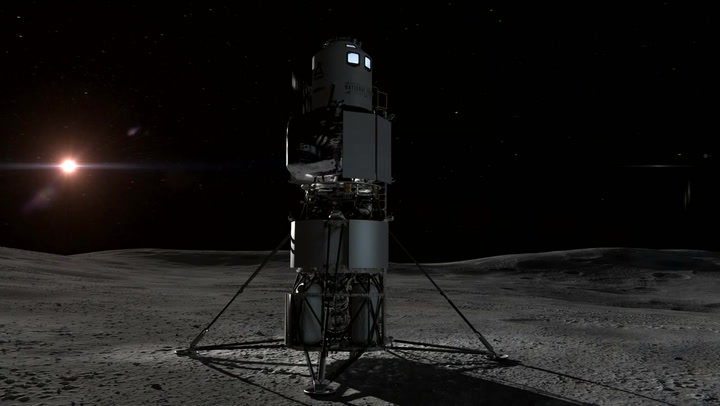In late April, NASA announced that it had awarded funding to three commercial groups -- SpaceX, Dynetics along with also the Blue Origin-led"National Team" -- to develop human landing systems to the bureau's Artemis lunar exploration program.
These companies must work fast, given that NASA would like to land two astronauts close to the moon's South Pole at 2024. And also the National Team has given the bureau some hardware to operate together with: a full-scale engineering mock-up of its lunar lander, which has been delivered to Johnson Space Center (JSC) in Houston today (Aug. 20).
Analyzing this technology mock-up for team interaction is a step in creating this historic mission actual," Brent Sherwood, Blue Origin's vice president of advanced development applications, said in a statement.

"The understanding we get from full blown mock-ups can't be achieved any other way," Sherwood said. "Benefitting from NASA's expertise and feedback at this early stage allows us to create a safe business system that meets the agency's requirements" The organizations are creating a landing platform with three separate sections: a descent element to transport astronauts to the lunar surface, an ascent component to start them off the moon, and a transfer element, a propulsive point that sends the warrior component from lunar orbit down toward the grey dirt.
The newly delivered mock-up, that stands over 40 feet (12 meters) tall, showcases the ascent and descent components, Blue Origin agents stated. It will stay at JSC through ancient 2021.
The warrior phase relies on Blue Origin's Blue Moon robotic lunar lander, which is also in development. The ascent stage leverages much of the technology used by NASA's Orion crew capsule, on which Lockheed Martin is the prime contractor. Orion is an integral part of the Artemis program; astronauts will start from Earth aboard the capsule, which will ride atop NASA's enormous Space Launch System rocket.
The transfer stage has considerable legacy as well; it is predicated on Northrop Grumman's autonomous Cygnus freighter, which has been ferrying cargo to the International Space Station for NASA because 2013.
The National Team, Dynetics and SpaceX divide $967 million in NASA funding, which is going toward 10 months of development work. The bureau will then choose at least one of the teams to continue maturing their landing systems, ultimately procuring crewed flights from one of the options which are still on the desk in 2024 and beyond.
Dynetics is creating a two-stage landing system, and SpaceX proposed to use its Starship Mars-colonizing spacecraft for its Artemis work.
